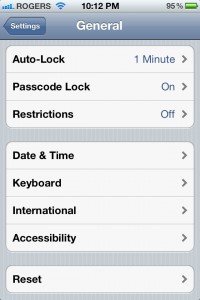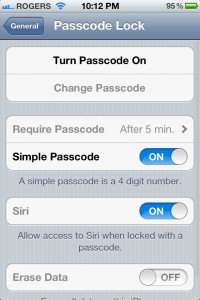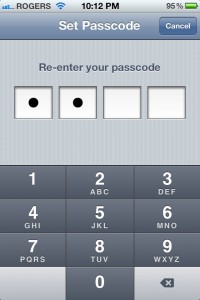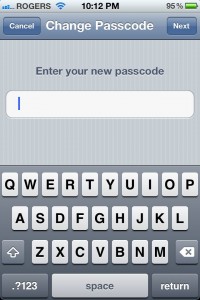New to iOS, worried about the security of your iPhone or iPad, and wondering how to set a Passcode Lock for better protection? While the current version may not be perfect, it provides a number of real advantages over just leaving your iPhone, iPod touch, or iPad unlocked.
It’s also easy to set up. here’s how:
Simple 4-digit Passcode Lock
To simple, 4-digit Passcode Lock:
- Open Settings
- Tap on General
- Tap on Passcode Lock
[tab:Step 2]
[tab:Step 3]
[tab:Step 4]
- Re-Enter the same passcode again to confirm;
[tab:END]
Strong alphanumeric Passcode Lock
If 4 numbers just doesn’t make you feel secure enough, you can switch to a stronger, alphanumeric Passcode.
- Open Settings
- Click on General
- Click on Passcode Lock
- Slide Simple Passcode to Off
- Type your new passcode in the box, this can now be anything you like
- Re-Enter the same passcode again to confirm
Siri and Passcodes
The iPhone 4S’ voice control system, Siri, has the ability to bypass Passcodes for some functions, like making calls or sending messages.
If you consider this a security risk, you can toggle it off from the same screen.
Erase Data
At the bottom of the page, you have an option to Erase Data in the event of ten incorrect passcode entries.
If you have small children who think it’s a fun game to tap away at the numbers while your phone turns red, you may not want to enable this or you’ll be restoring your phone a lot.
Security is constantly at war with convenience, make your choice.
Data Protection
Once you’ve enabled a Passcode Lock on an iPhone 4S, iPhone 4, iPhone 3GS, iPad 2, iPad, iPod Touch 4, or iPod Touch 3, you get the added benefit securing the hardware encryption keys.
This makes everything from email to App Store apps more secure.
SOURCE | LINK (Tipb.com) | LANGUAGE | ENGLISH |




